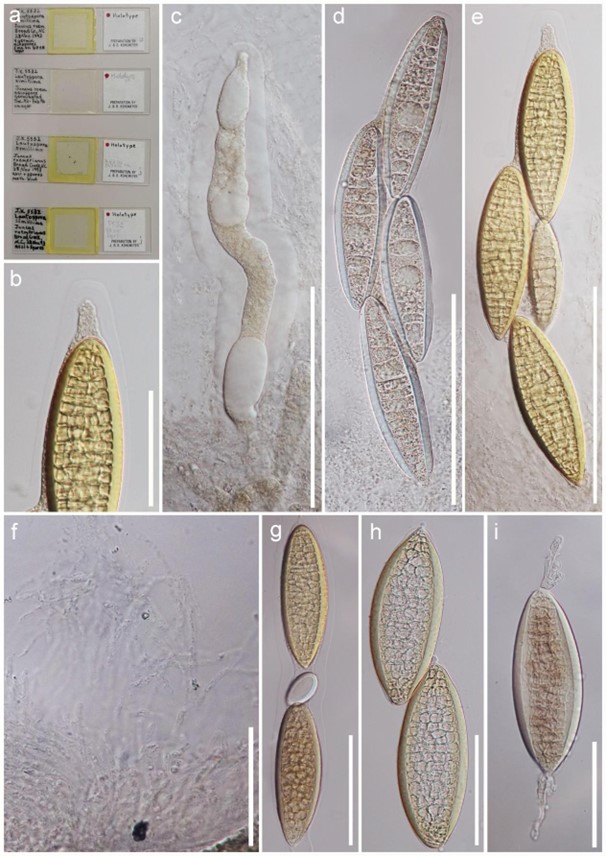Lautospora K.D. Hyde & E.B.G. Jones, Bot. Mar. 32(3): 479 (1989)
MycoBank number: MB 25368; Index Fungorum number: IF 25368; Facesoffungi number: FoF 02116; 2 morphological species (Species Fungorum 2020).
Type species – Lautospora simillima Kohlm., Volkm.-Kohlm. & O.E. Erikss.
Notes – Lautospora species can be distinguished by immersed ascomata, 4-spored, unitunicate asci with an ocular chamber and ring, cellular paraphyses and large ascospores which are muriform, hyaline and thick-walled (Hyde & Jones 1989). Kohlmeyer et al. (1995) introduced Lautosporaceae to include this genus and assigned it to Ascomycotina family incertae sedis. More taxon sampling and DNA sequencing are recommended for this genus including the type L. gigantea to confirm the phylogenetic placement. Lautospora simillima is as an obligate marine fungus, with its ascomata occurring singly, or at the most, in pairs at the base of very soft culms, between 3 and 12 cm above the rhizome. However, we could not observe the ascomata on microslides of the holotype. Lautospora simillima is a second species assigned to the genus, occurring on the culms of Juncus roemerianus and no asexual morph has been reported for this species (Kohlmeyer et al. 1995, Wijayawardene et al. 2017a).

Figure 144 – Lautospora simillima (Material examined – USA, North Carolina, on senescent culms of Juncus roemerianus, J. Kohlmeyer, J.K. 5532 IMS), microslides from holotype). a Microslides of Lautospora simillima. b Apex of an asci in methylene blue. c, d Asci. e An ascus in methylene blue. f Paraphyses. g, h Ascospores. i Germinating ascospore on agar. Scale bar: c-e = 200 μm, d-i = 100 μm, b = 50 μm.
Species
Lautospora simillima
